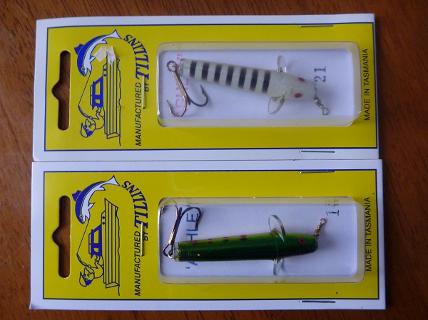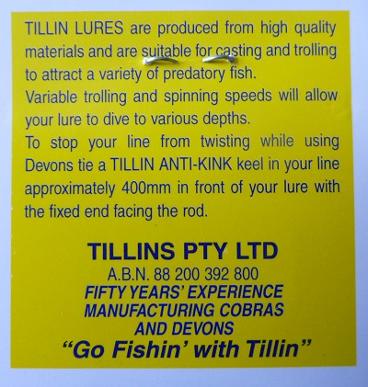Tillin Lures - TAS :
*Banner image - Tillin Flatt-Fish lure which was released by 1960
Tillin Lures - TAS:
Tillin lures have been made in Tasmania for approximately 60 years and are still being made. Ted Tillin started making his lures in his garage as a cottage industry in the early 1950's. In 1958 he moved his business to a factory in Blackwall, West Tamar. A highly successful lure for targeting trout, Tillin lures are in the style of old Devons, Cobras and Ashleys. Available in large range of colours as shown. Ted died in 1970 and the business was purchased by Alan Best and Terry Charlton and is still operated by Alan today.
The early logo for Tillin lures is shown below with Edward 'Ted' Tillin and his wife's name sitting next to the fish logo. This fish emblem was used from the earliest Tillin days and is a good way to date older packaging. An early Tillin salesman sample kit from the 1950's showed a number of models including a wide range of spoons, devons, a plastic flatfish shaped lure and the early versions of the King Cobra which were then called 'The Eildon Lure'. This is confirmed by the later price codes from a 1959/60 catalogue released by Tackle O' The World, a Sydney company of the time.
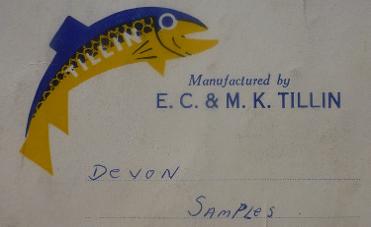
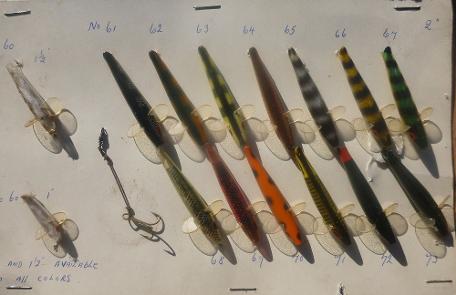
The early devons were manufactured and sold in 4 sizes from 1, 1 1/2, 2 and 2 1/2 inch models. Above and right shows some of the earliest colours (60 -73) on a sample card. Below is part of the devon range from the salesman samples.
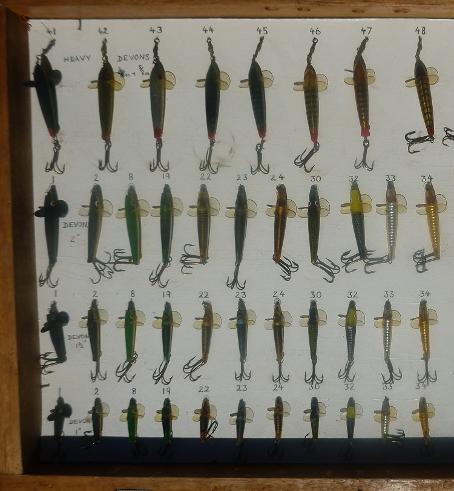
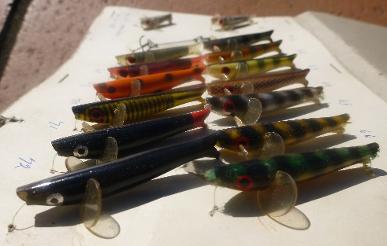
Probably the most famous Tillin lure that is still sold today is the Cobra or King Cobra lure which is characterised by the red rhinestone eyes. The early Tillin salesmans samples name the early Cobras as the 'Eildon Lure' which beggars the question of when the name King Cobra was adopted?
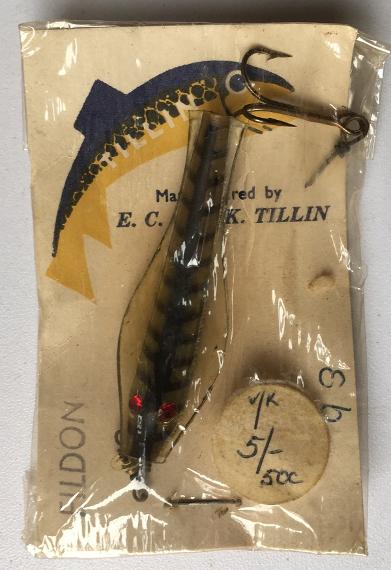
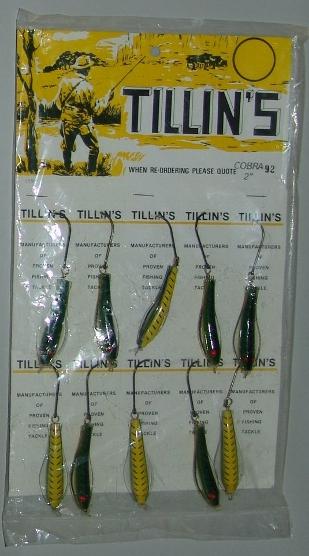
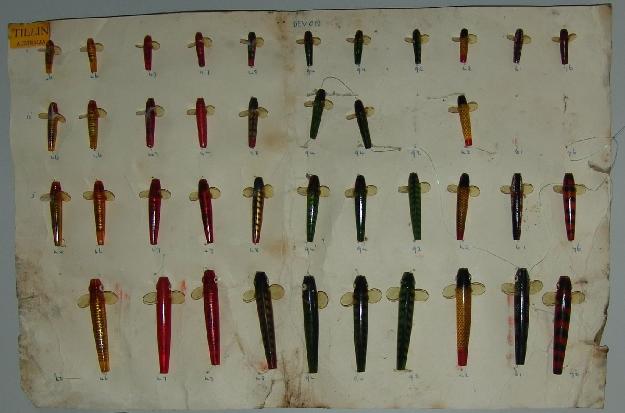
Tillin's Flatt-Fish:
The 'Flatt-fish' is possibly one of the rarest of the Tillin's lures and is an early moulded plastic lure that is hollow. It appeared around the time of the Helin's Flatfish but any advertising relating to this lure is yet to surface. It was included in the early Tillin salesman's case but not seen outside of the 1960's. It was available in two sizes with smallest size having a single hook towpoint.
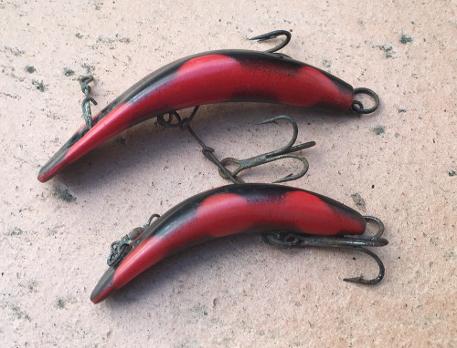
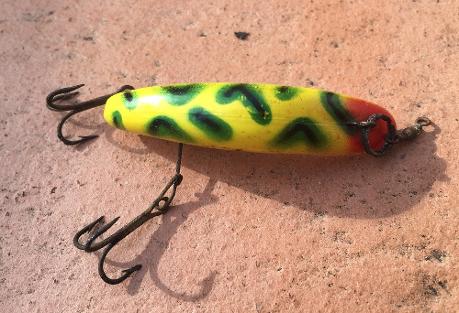
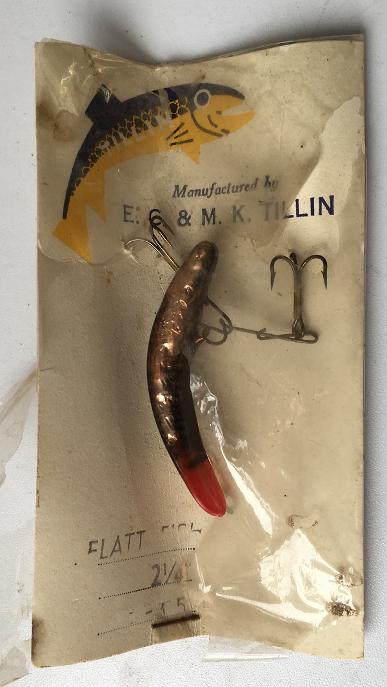
Tillin's Super Flatt-Fish:
The 'Super Flatt-fish' is rarer than the smoother bodied 'Flatt-Fish' and is rarely recognised. The lure below was kindly shared with Lure Hub OZ after being uncovered in 2018 from old stock and has a single double hook hanger with serrated body on each side of lure. Fitted with original Tillin snap clip. Named on early packaging and an uncommon item.
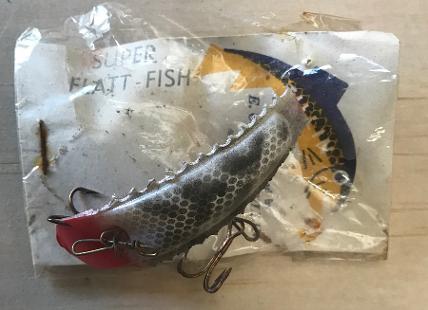
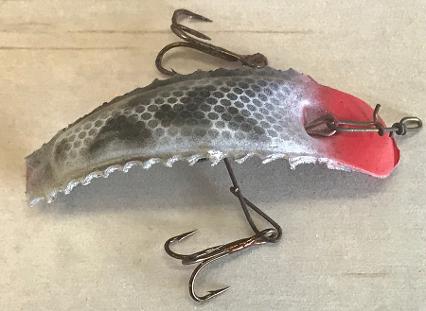
Tillin's Red Gill:
The 'Red Gill' Pattern is an iconic Australian lure that was made in the 1950's and was a flattened 'Baltic Minnow' style of lure. Occasionally the Tillin version turns up and is easily recognised from the original due to the colour variations. It seems these were only ever released for a short time before being discontinued and were available in 5 colour variations as shown below. Defintely uncommon.
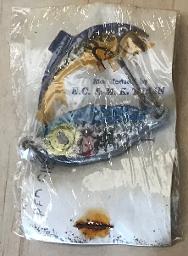
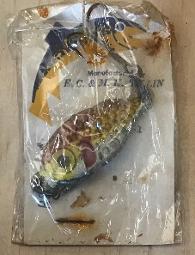
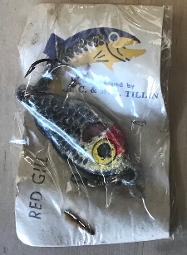
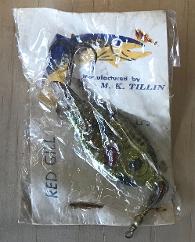
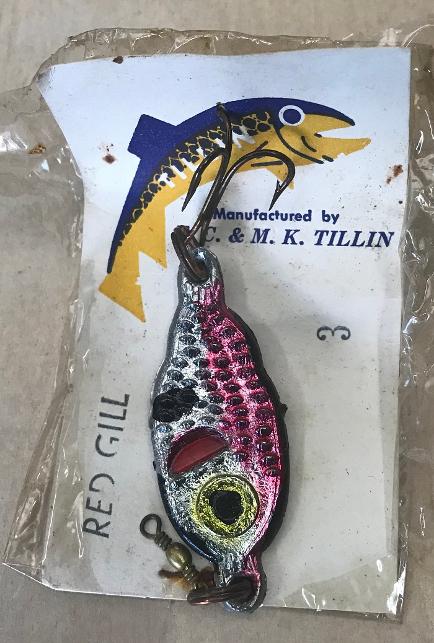
Tillin's Spoons:
There are a number of early Tillin spoon style lures which epitomize the early spinning scene during the 1950's and into the 1970's. Many of the spoons were copies of earlier Australian Wonder spoons however there were original Tillin spoons which were pressed with the name on the underside. Shown below is the Tillin Wobbler or small spoon which is shown in five finishes including the raw finished metal. All spoons were fitted with copper split rings and a small red plastic oval attractor.
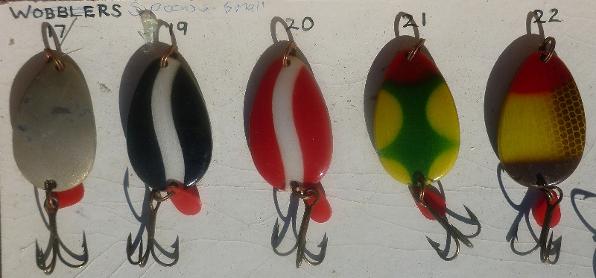
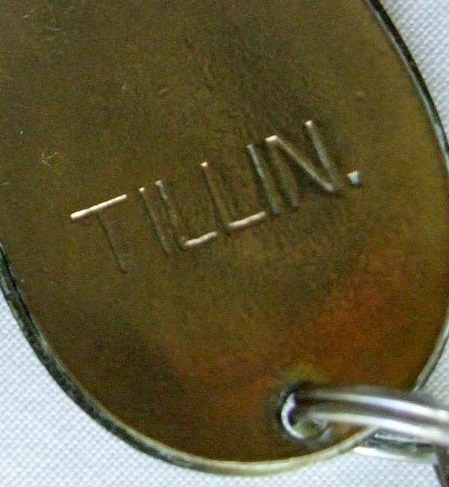
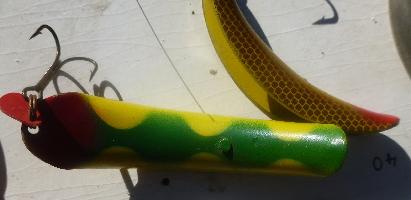
There was also a metal flatfish style lure that resembled a Russellure which was a popular lure in USA from the late 1940's and 50's. It came in two sizes and the same colours as shown above on the Fin Fish model. They have a very sturdy design and are a heavy sinking lure. Both models show up occasionally and are normally in poor condition.
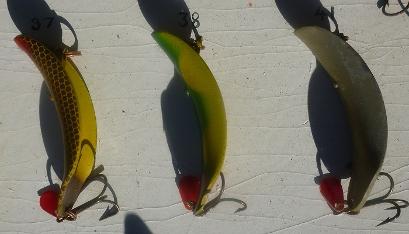
Tillin's 'Fin Fish':
The 'Fin Fish' is aptly named and features a small punched out metal fin on the face of the spoon which is remotely fish shaped.
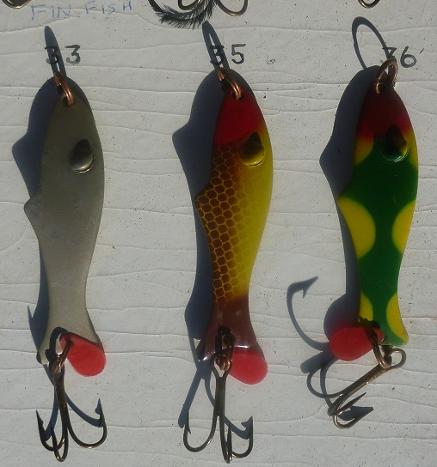
Tillin's Wobblers :
The Tillins 'Wobblers' which are very similar to the Wonder Wobbler are shown with some of the earlier colour codes. Shown opposite is an example of early Tillins packaging - colour code 38. This type of packing has the lure sitting within a folded card.
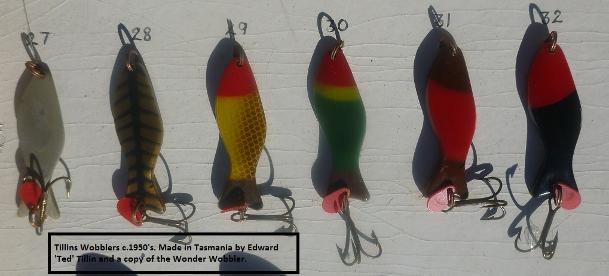
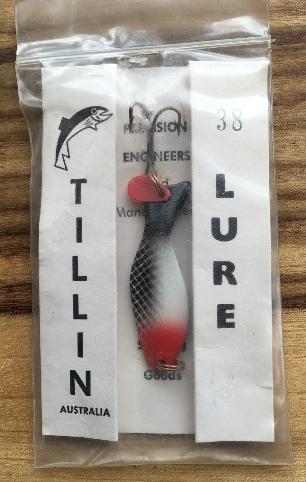
Tillin's Baltic Jagger:
The version of the Baltic Jagger that was made by Tillin was used for deep jigging of impoundments for redfin and trout. This model competed with the DK Redfin Bobber which was released around the same time and was a forerunner to the Baltic Jigger that became so popular.
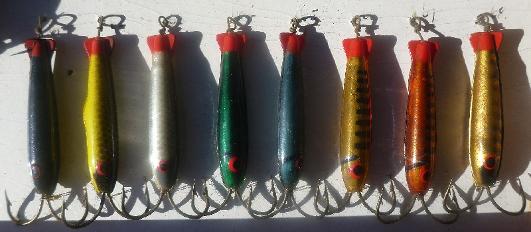
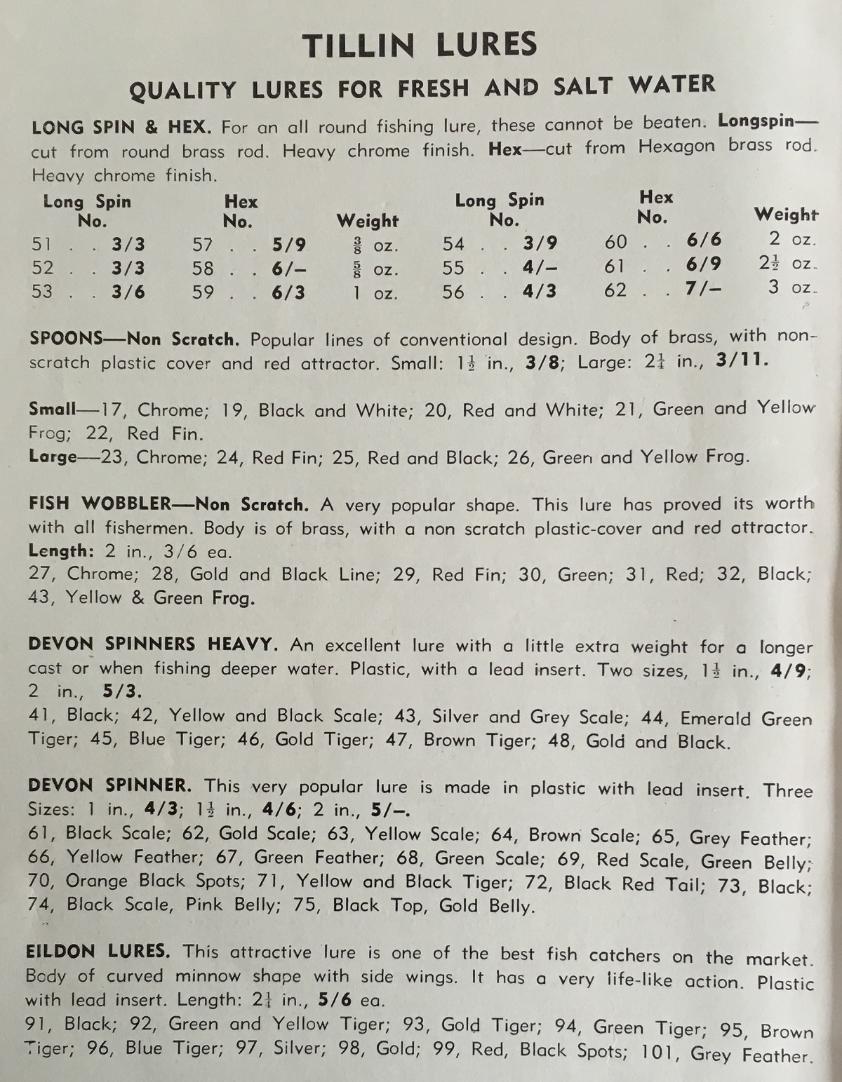
This original price coding from Tackle O' The World Catalogue 1959/60 shows that Tillins were involved with making spoons and metal spinning lures and this is confirmed with the salesman samples. It also lists the 'Eildon' Lure which is the original name before 'Cobra' was adopted. Below is from Rod and Gun in 1966
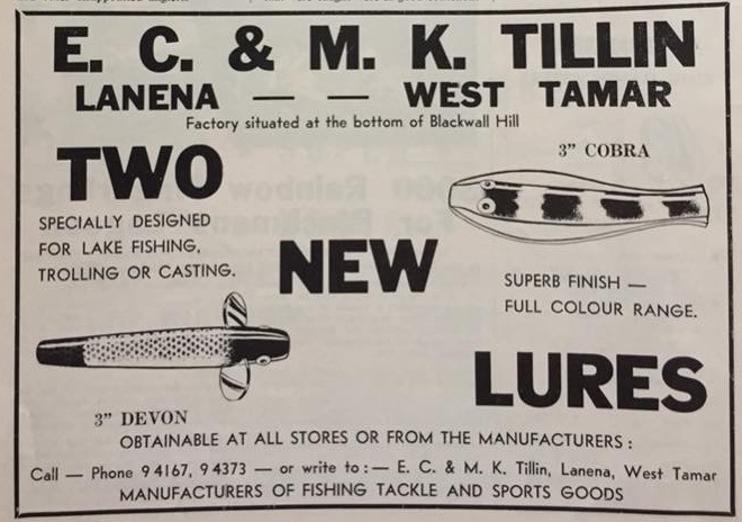
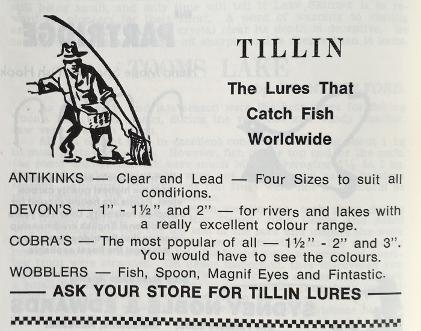
This series of ads appeared in the Annual Reports for the Tasmanian angling clubs. Above starts with 1981 and the Ashley Devon appears in 1983 although probably available earlier.
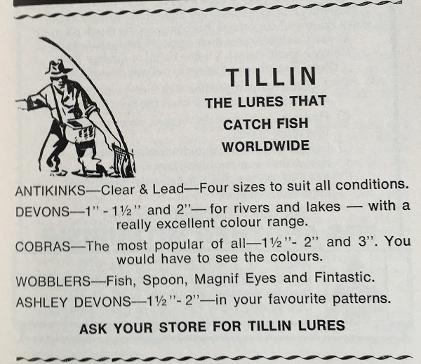
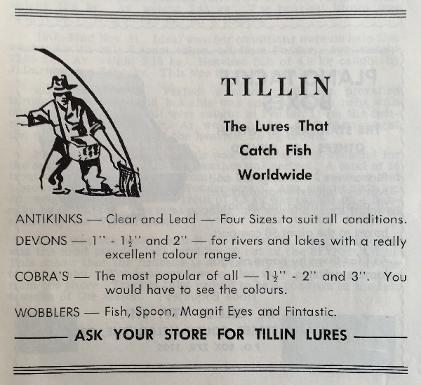

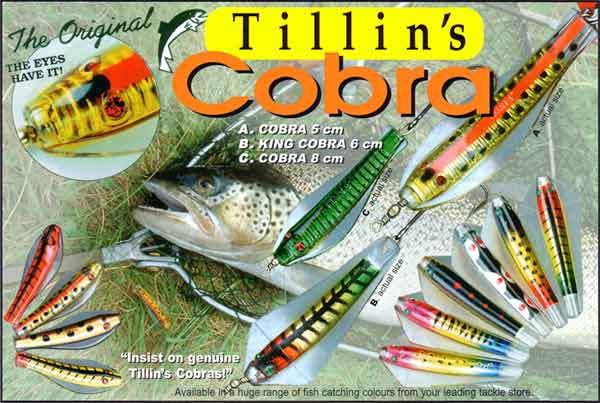
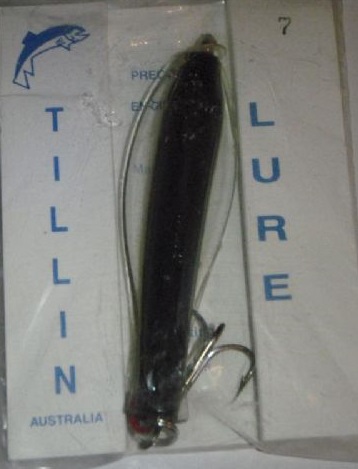
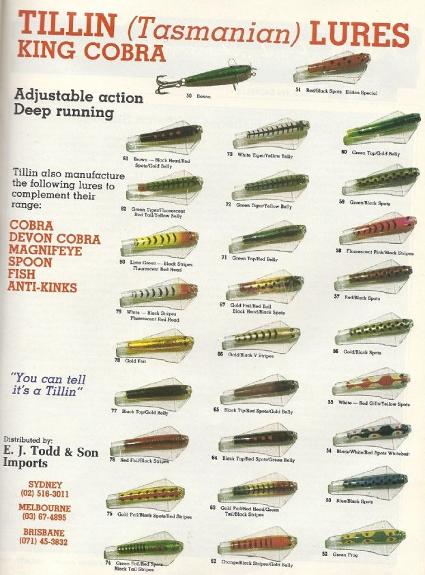
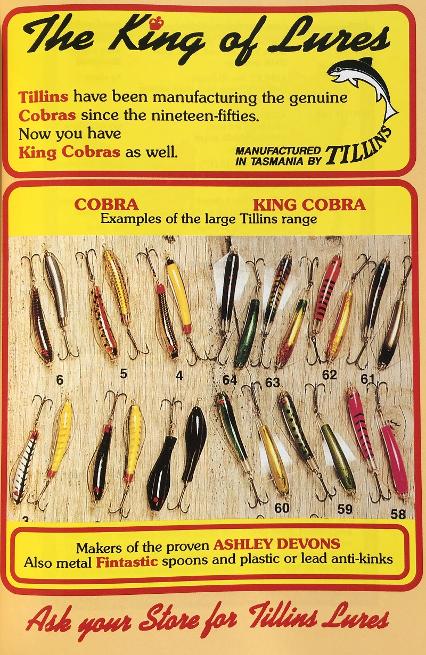
The advertisement below celebrates more than 40 years of lure making in Tasmania and dates to 1996. Article appeared in the Tasmanian Angling Report for 1994.
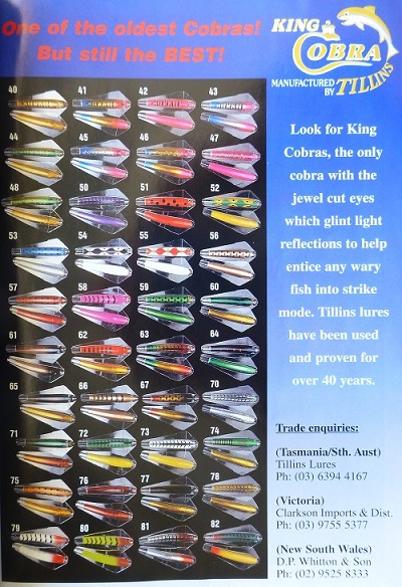
The advertisement left is c.1985.
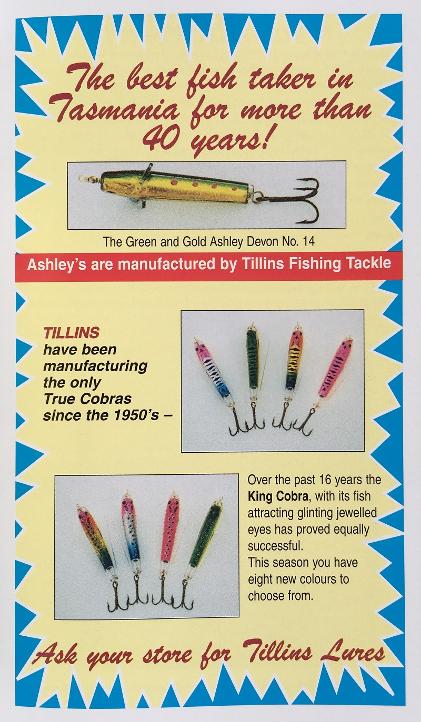
Left is 1994
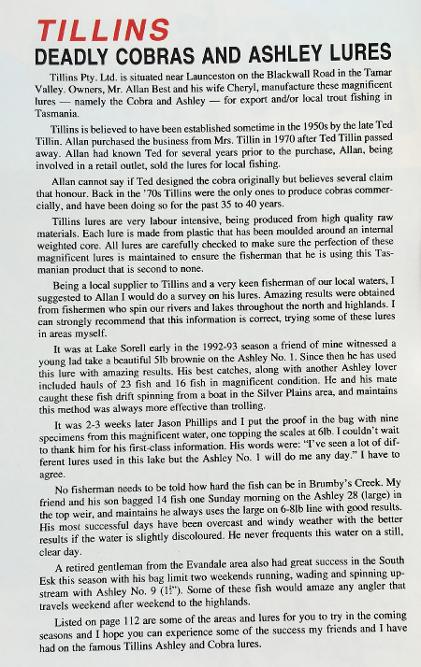
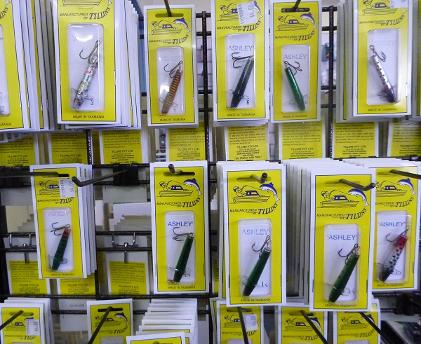
Photos courtesy of Wigstons Sports, New Norfolk, Tasmania c.2013. Store is now closed.
